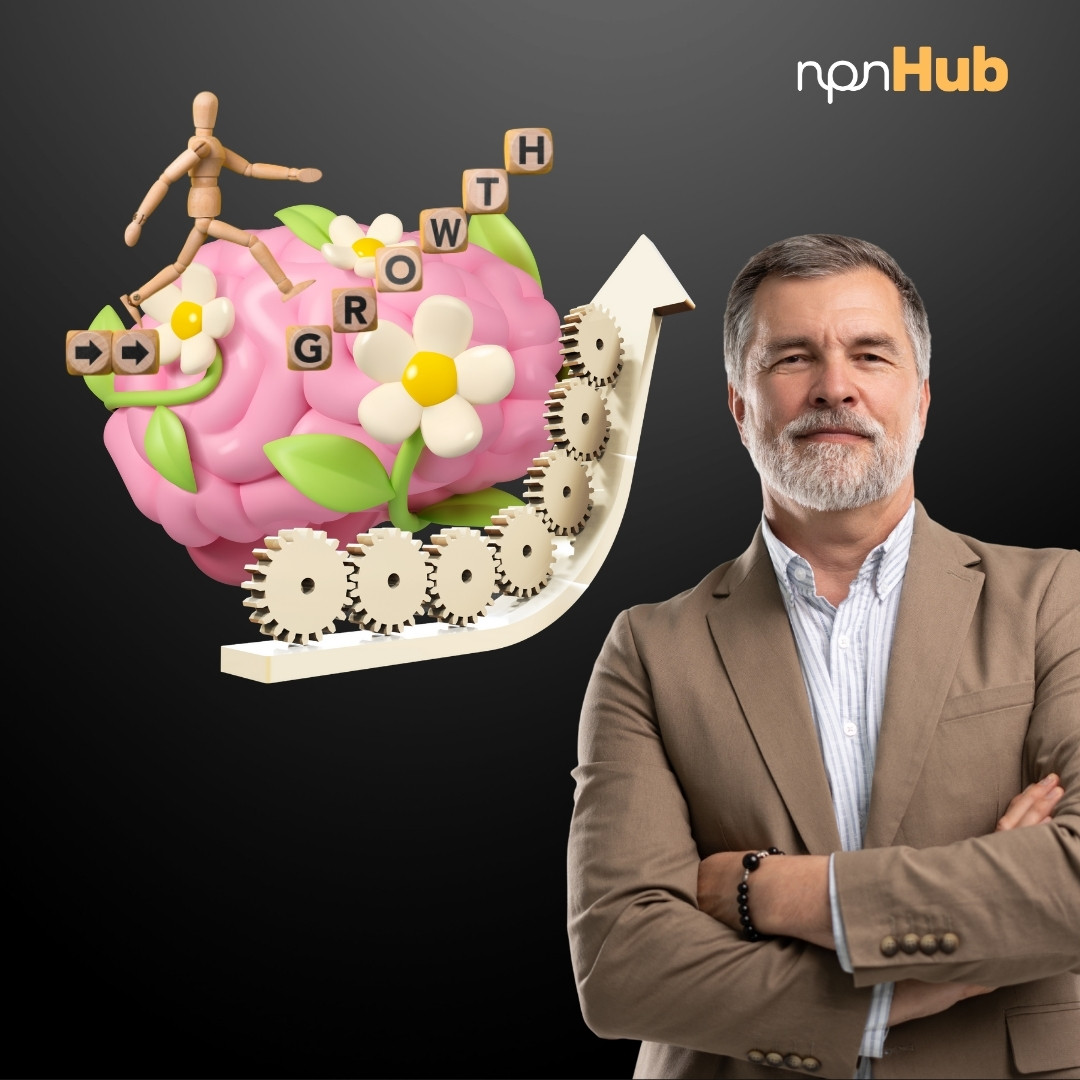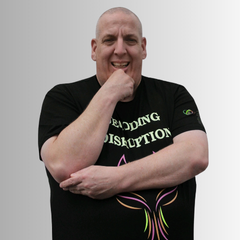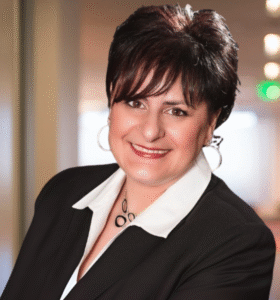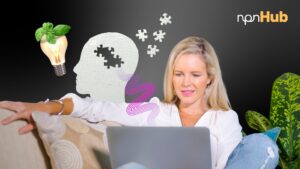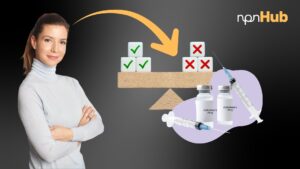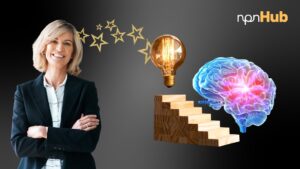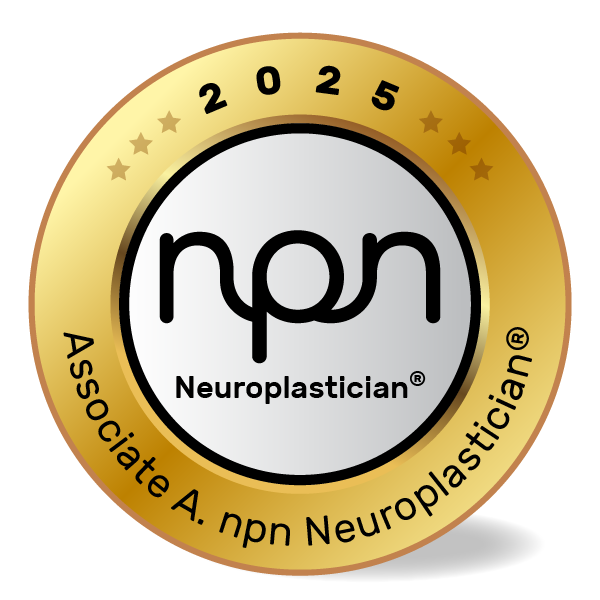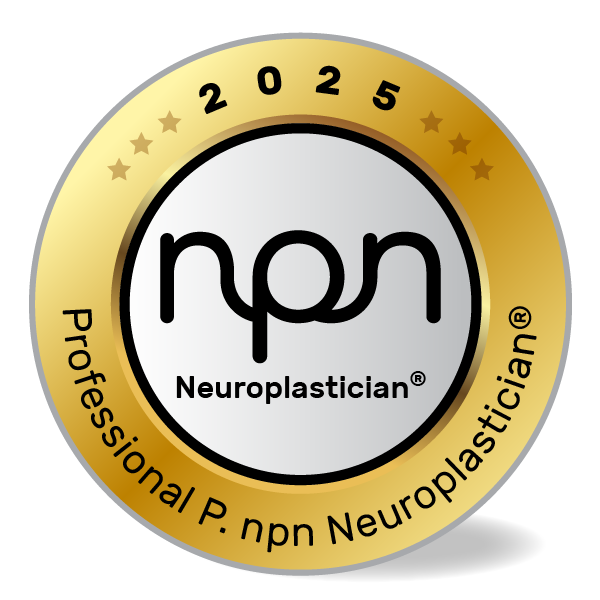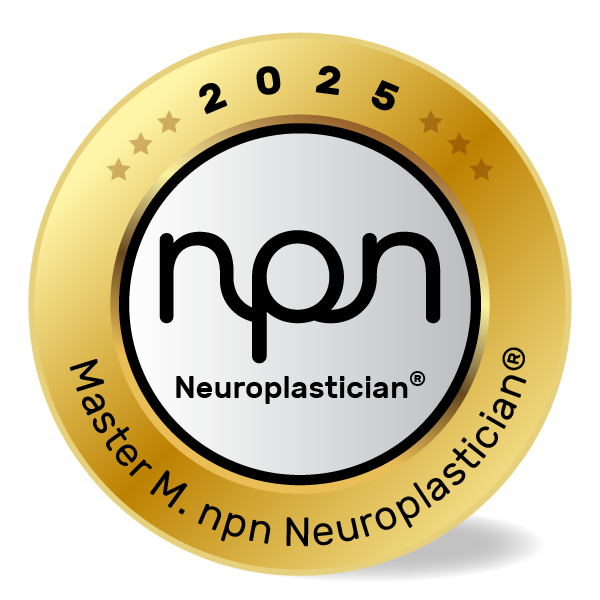How Brain-Based Strategies unlock Transformation, Purpose, and Resilience
npnHub Editorial Member: Willem Royaards curated this blog
Key Points
- Personal growth is supported by neuroplasticity – the brain’s ability to rewire and reshape itself through experience.
- Brain areas such as the prefrontal cortex, amygdala, and hippocampus play key roles in self-awareness, motivation, and learning.
- Emotional regulation, goal-setting, and cognitive reappraisal are essential tools for personal development.
- Neuroscience-backed coaching and well-being strategies enhance long-term transformation.
- Practitioners can guide clients more effectively by understanding how the brain changes through behavior, mindset, and reflection.
1. What is Personal Growth?
Picture a wellbeing coach working with a mid-career client who feels stuck. Despite external success, the client lacks motivation and clarity. The coach gently asks, “When was the last time you felt truly engaged?” That question unlocks a deeper journey – one rooted not in productivity, but in self-understanding.
This scenario isn’t from a research study – it’s a relatable example of how personal growth often begins: not with a breakthrough, but with a quiet realization.
Personal growth refers to the process of becoming more self-aware, developing new skills, and transforming patterns that no longer serve us. It’s not just about achieving goals – it’s about changing from the inside out.
From a neuroscience perspective, personal growth is grounded in neuroplasticity, the brain’s ability to form new neural connections over time. Studies by Dr. Richard Davidson at the University of Wisconsin-Madison have shown that emotional style and habits can be reshaped through intentional practice like meditation and self-reflection (Source).
This means personal transformation is not wishful thinking – it’s a biological capacity hardwired into our brains.
2. The Neuroscience of Personal Growth
In a group coaching session, a practitioner noticed a powerful moment: one client realized her perfectionism was rooted not in ambition, but in fear. As the insight landed, her body relaxed. Her prefrontal cortex was finally no longer hijacked by the overactive limbic system.
This is a storytelling illustration – not scientific data – but it mirrors what we see in neuroscience.
Personal growth engages multiple brain systems. The prefrontal cortex (PFC) governs decision-making, self-awareness, and goal-setting. The amygdala regulates fear and emotional responses. The hippocampus stores autobiographical memory and context. Together, these areas form the scaffolding of transformation.
Studies show that practices like mindfulness, journaling, and coaching activate the PFC while reducing amygdala reactivity (Source). This shift allows individuals to respond instead of react – to reframe past experiences and build intentional futures.
Dr. Norman Farb at the University of Toronto has explored how self-reflection and “meta-awareness” alter neural networks, suggesting that cognitive flexibility is not just a trait – it’s trainable (Source).
Ultimately, personal growth isn’t just a feeling. It’s a brain-based process of rewiring how we think, feel, and act.
3. What Neuroscience Practitioners, Neuroplasticians, and Well-being Professionals should know about Personal Growth
A neurocoach shared this client story: “Every time we worked on habit change, she reverted. But when we addressed the belief behind the behavior – ‘I’m not worthy’ – everything changed.” Understanding the root wiring was the key.
This isn’t lab data, it’s daily reality in applied neuroscience.
Professionals need to understand that personal growth is not about willpower alone. It’s about creating the conditions for the brain to change. False beliefs about “motivation” being fixed often limit progress. Likewise, myths such as “people can’t change after a certain age” have been debunked by research on adult neuroplasticity.
Frequently Asked Questions practitioners encounter:
- Can people really rewire negative thought patterns after years of conditioning?
- How long does it take for new habits to become wired in the brain?
- Is personal growth more emotional, cognitive, or behavioral?
The answer lies in integration. As Dr. Jeffrey Schwartz noted in his research on cognitive-behavioral therapy for OCD, “attention density” changes the brain’s default responses (Source).
Practitioners should focus on repetition, emotional salience, and reflective practices to rewire habitual circuits.
4. How Personal Growth affects Neuroplasticity
Personal growth and neuroplasticity are deeply intertwined. Every time a client chooses a new response instead of an old pattern, the brain changes. Repeated behaviors, thoughts, and feelings create stronger synaptic connections in the relevant neural pathways.
For example, practicing gratitude strengthens the medial prefrontal cortex, which enhances prosocial behavior and well-being. Likewise, shifting from self-criticism to self-compassion changes how the default mode network processes autobiographical memory and identity.
Dr. Michael Merzenich’s work shows that plasticity is driven by focused attention and reward-driven repetition. Growth accelerates when actions are emotionally meaningful, personally chosen, and consistently practiced (Merzenich, 2013).
In short, neuroplasticity allows clients to move from surviving to thriving – not by chance, but by rewiring the very brain circuits that shape identity.
5. Neuroscience-Backed Interventions to improve Personal Growth
Why Behavioral Interventions matter
Many clients arrive stuck in cycles of shame, procrastination, or self-sabotage. They want to change but don’t know how. As a practitioner, knowing which behaviors shape brain circuits helps you lead more effectively. Growth isn’t about pushing harder – it’s about aligning with the brain’s natural pathways.
1. Narrative Reframing
Concept: The brain creates identity through narrative memory. Reframing stories activates the hippocampus and prefrontal cortex, helping integrate new meaning (Source).
Example: A practitioner guides a client to rewrite a childhood experience of “failure” into one of “resilience and resourcefulness.”
✅ Intervention:
- Ask clients to write down a difficult life story from their past.
- Guide them to reflect on what strengths they developed as a result.
- Use metaphor and meaning-making to shift the interpretation.
2. Mindful Self-Observation
Concept: Mindfulness activates the anterior cingulate cortex and enhances cognitive flexibility (Source).
Example: A coach uses guided breathwork and daily mindfulness check-ins to help a client detach from reactive thought loops.
✅ Intervention:
- Introduce 5-minute daily mindfulness practice.
- Use interoception to bring attention to body states during stress.
- Practice “naming emotions” to reduce amygdala overactivation.
3. Dopamine-Based Goal Tracking
Concept: Goal achievement activates dopamine pathways in the ventral striatum, increasing motivation (Source).
Example: A practitioner helps a client set micro-goals with immediate feedback, generating positive momentum.
✅ Intervention:
- Break down goals into 24-hour wins.
- Track with visual tools (e.g., streak calendars, habit apps).
- Celebrate small successes with tangible rewards.
4. Emotional Reappraisal
Concept: Cognitive reappraisal changes the emotional response to a stimulus and reduces amygdala activity (Source).
Example: A therapist helps a client reframe “criticism” from their boss as “an opportunity for growth.”
✅ Intervention:
- Teach the difference between reaction and interpretation.
- Practice scenario reframing in session.
- Use journaling prompts like “What else could this mean?”
6. Key Takeaways
Your clients are not stuck – they’re in transition. Personal growth is not abstract – it’s a neural process, one that practitioners can guide with clarity and confidence. By applying science-backed strategies, we empower the brain to do what it’s built to do: adapt, evolve, and grow.
🔹 Personal growth is powered by neuroplasticity and emotional regulation.
🔹 Practitioners can rewire client habits through small, meaningful actions.
🔹 Narrative, mindfulness, and dopamine-based tracking activate key brain regions.
🔹 Growth is not a destination – it’s a rewiring journey toward purpose and resilience.
7. References
- Davidson, R. J., & McEwen, B. S. (2012). Social influences on neuroplasticity: Stress and interventions to promote well-being. Nature Neuroscience, 15(5), 689–695.https://pmc.ncbi.nlm.nih.gov/articles/PMC3491815/
- Farb, N. A., et al. (2007). Attending to the present: mindfulness meditation reveals distinct neural modes of self-reference. NeuroImage, 35(4), 1630–1641.https://pubmed.ncbi.nlm.nih.gov/18985137/
- Holzel, B. K., et al. (2011). Mindfulness practice leads to increases in regional brain gray matter density. Psychiatry Research, 191(1), 36–43.https://pmc.ncbi.nlm.nih.gov/articles/PMC3004979/
- Gruber, M. J., et al. (2014). States of curiosity modulate hippocampus-dependent learning via the dopaminergic circuit. Neuron, 84(2), 486–496.https://pubmed.ncbi.nlm.nih.gov/25284006/
- Pennebaker, J. W. (1997). Writing about emotional experiences as a therapeutic process. Psychological Science, 8(3), 162–166.https://journals.sagepub.com/doi/10.1111/j.1467-9280.1997.tb00403.x
- Schwartz, J. M., & Begley, S. (2002). The Mind and the Brain: Neuroplasticity and the Power of Mental Force. Harper Perennial.https://catalog.nlm.nih.gov/discovery/fulldisplay/alma9911591483406676/01NLM_INST:01NLM_INST
- Merzenich, M. (2013). Soft-Wired: How the New Science of Brain Plasticity Can Change Your Life. Parnassus Publishing. https://lindagraham-mft.net/soft-wired-how-the-new-science-of-brain-plasticity-can-change-your-life/

